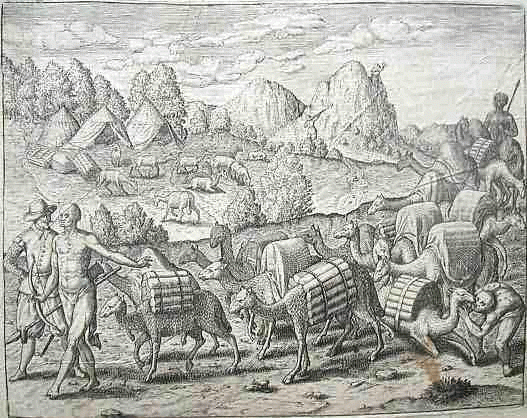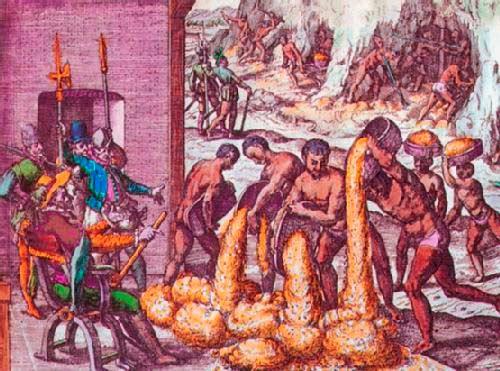Honduras becomes, in fact, an eminently mining country, albeit with many ups and downs, reflecting above all the demand for silver in international markets.
Mining
It is said of the uninterrupted exploitation of veins and sands with precious minerals. Honduran history would revolve around mining at least until the first half of the 19th century.
In fact, gold and silver production in Honduras was increasing as the indigenous population declined, and stagnated by the mid-17th century, precisely when the indigenous population had begun to recover demographically.
The first stage of mining begins on the Caribbean coast, generally exploiting alluvial gold and silver in the Aguan and Quimistan rivers. In its second stage the mining is developed in the Valley of Comayagua in 1539, a year after it was established, the Spaniards refine 200 pounds, the coastal gold production is decaying so there is a massive displacement of this activity towards the interior of the country, the mines of Yuscaran, Tegucigalpa, Santa Lucia, Ojojona, Opoteca, San Francisco, San Juan, San Juan Antonio de Oriente, Cedros, Potrerillos and Sulaco were discovered in the sixteenth century. The climax of the mining activity was reached in 1584 and in the seventeenth century that mining production declines but does not disappear, this decline is explained by the exhaustion of veins, use of rudimentary techniques, lack of labor force and the rise in its price due to the lack of capital to finance operations of larger amounts, without disappearing mining in Honduras by the eighteenth century was already in sharp decline. The mining activity encouraged the production of other goods emerging from these extensive agricultural areas in Comayagua, Tegucigalpa and Choluteca.
Agriculture
The indigenous crops and plants and livestock brought from Europe allowed the development of a varied agricultural activity in Honduras. The groups located in the Mesoamerican area, referring to the Lencas and Chorties, had not only successfully solved the problems of food subsistence, but had also created ingenious and efficient agricultural systems.
The terrace cultivations practiced in the intermediate area by the Pech and Tawahakas are a faithful example of the rational use of the resources provided by the Earth. The passage of time bears witness to the harmonious relationship that the natives established between their production systems and the ecological environment. The Rio Platano Biosphere is a legacy of this harmony between man and nature.
Among the agricultural products of the indigenous communities before the conquest, there were: corn and beans, vegetables such as: yucca, sweet potato, taro, yam, and others), fruits such as: pineapple, guava, mamey, jocotes, cocoa, etc., other crops such as: cotton, tobacco, indigo, sarsaparilla, made up the agriculture of the natives and that will be maintained during the colony and survive to this day.
The Spaniards introduced new crops such as: wheat, barley, chickpeas and rice, lettuce, coriander, parsley, mint, spinach, radish, garlic, onion, carrot; fruits: orange, lemon, melon, banana, mango, passion fruit, fig, grape; they also introduced other crops such as coffee and sugar cane.
Livestock
Other alternative activities to the decline of mining were cattle ranching, which was also oriented mainly to satisfy the demands of mining activities. Livestock was becoming the main economic activity as mining began to decline from the seventeenth century. In 1804, in the province of Honduras there were approximately 500 000 cattle in the early nineteenth century, it is estimated that there were about 50 000 mules and horses. The main cattle areas were: Olancho, Tegucigalpa, Cantarranas, Choluteca and Yoro. Olancho became the largest cattle ranching area of the General Capitania of Guatemala.
In Gracias and Choluteca, part of the hundreds of mules used in the trade caravans that transited through the different provinces of the Capitanía General were obtained. The need for transportation gradually increased the herd.
These three activities were the backbone of the colonial economy. The fundamental labor force were the natives, initially slaves, they became "encomendados", and later subject to the "repartimientos", to later become salaried workers in haciendas and mines.




